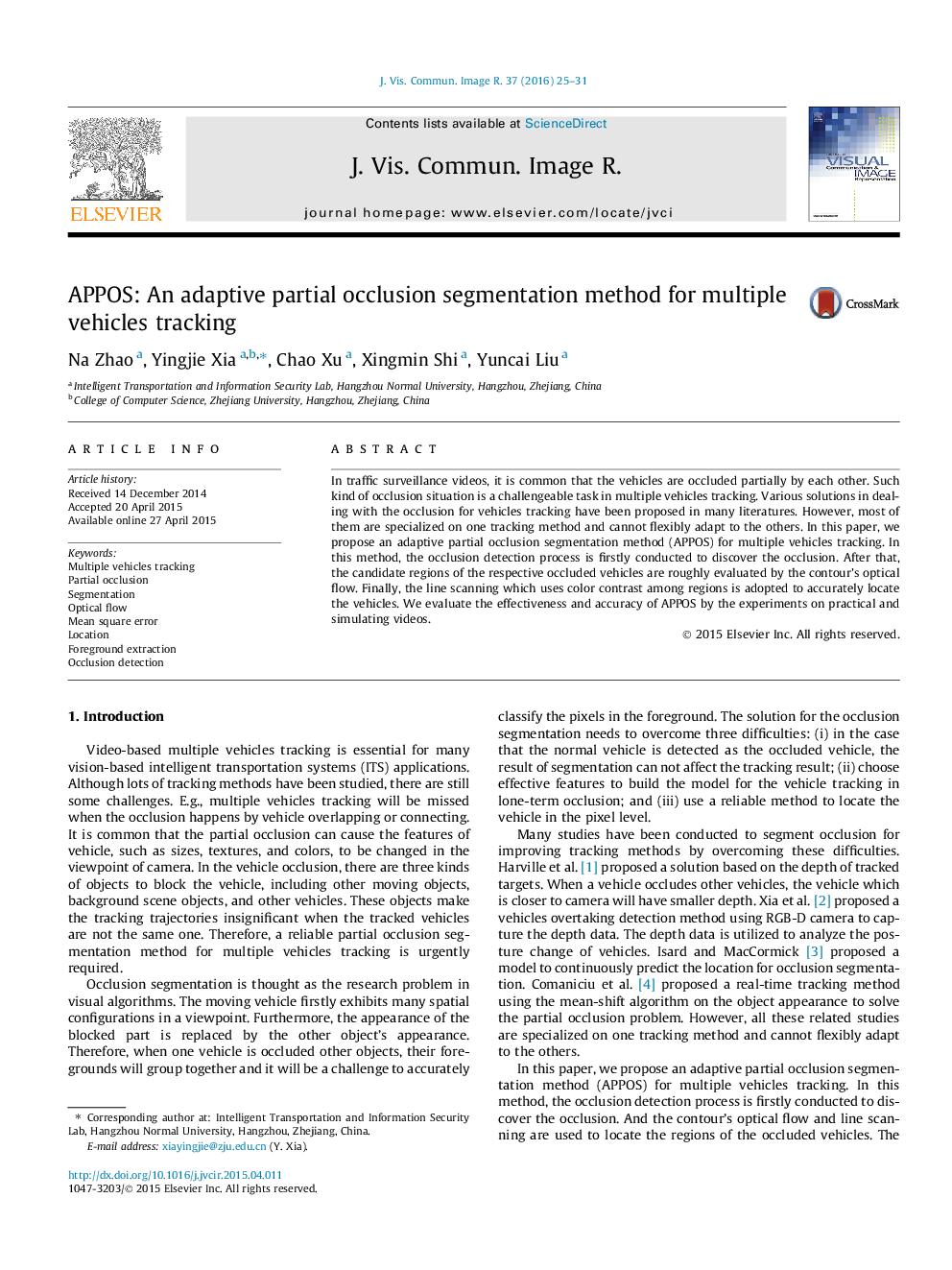| Article ID | Journal | Published Year | Pages | File Type |
|---|---|---|---|---|
| 528786 | Journal of Visual Communication and Image Representation | 2016 | 7 Pages |
•Our occlusion segmentation method can be adapted to most kinds of tracking methods.•The segmentation process will not affect the tracking results mostly.•The candidate region evaluating process can get back the tracking-lost vehicle.
In traffic surveillance videos, it is common that the vehicles are occluded partially by each other. Such kind of occlusion situation is a challengeable task in multiple vehicles tracking. Various solutions in dealing with the occlusion for vehicles tracking have been proposed in many literatures. However, most of them are specialized on one tracking method and cannot flexibly adapt to the others. In this paper, we propose an adaptive partial occlusion segmentation method (APPOS) for multiple vehicles tracking. In this method, the occlusion detection process is firstly conducted to discover the occlusion. After that, the candidate regions of the respective occluded vehicles are roughly evaluated by the contour’s optical flow. Finally, the line scanning which uses color contrast among regions is adopted to accurately locate the vehicles. We evaluate the effectiveness and accuracy of APPOS by the experiments on practical and simulating videos.
